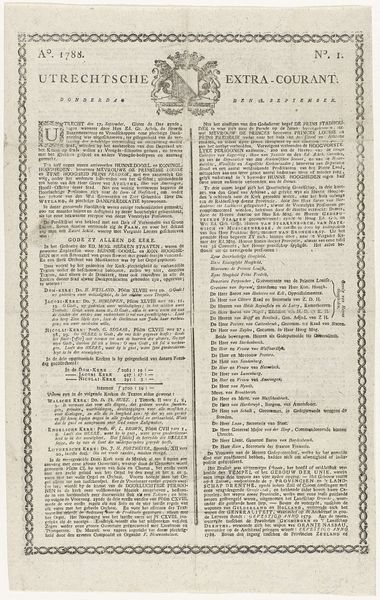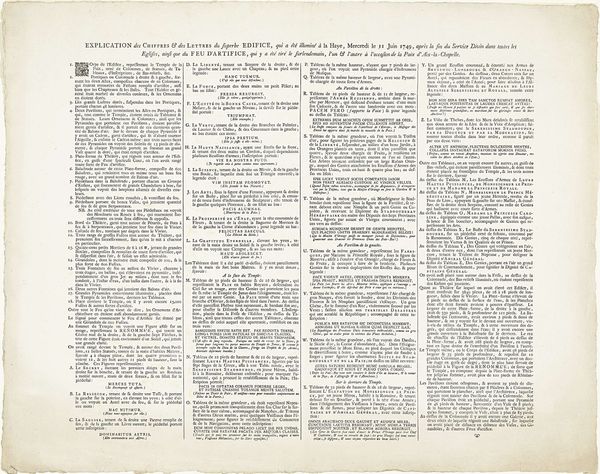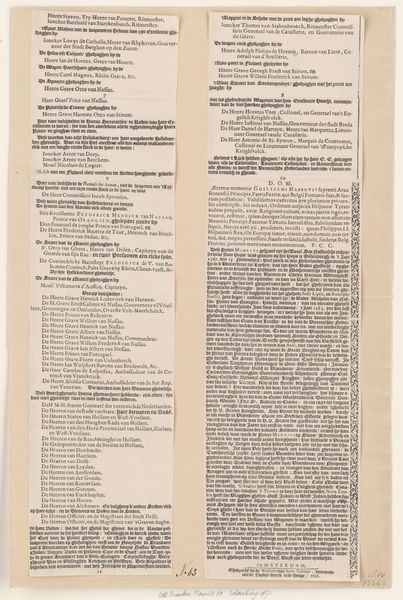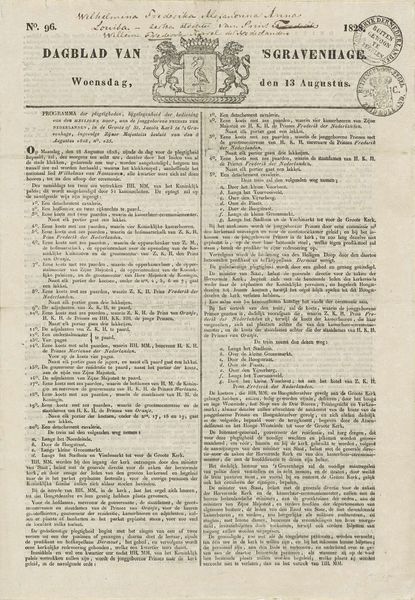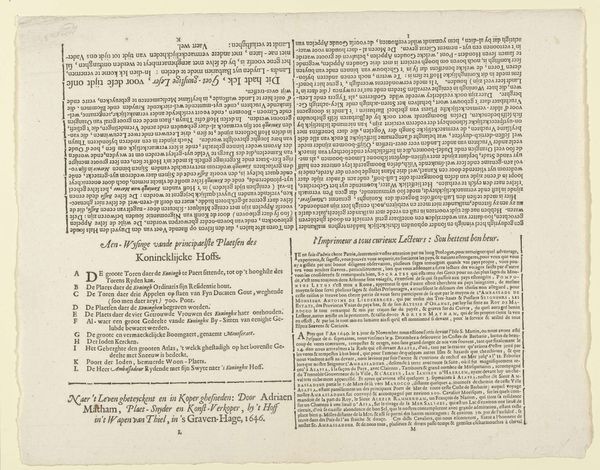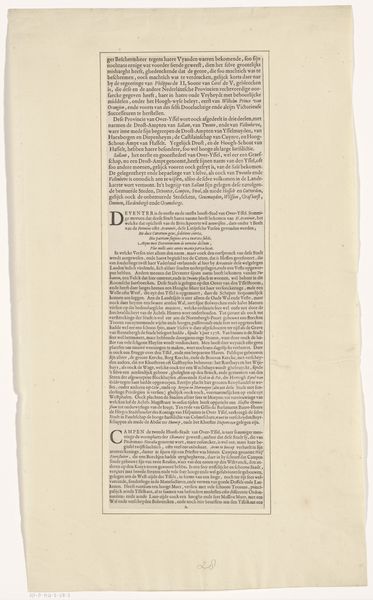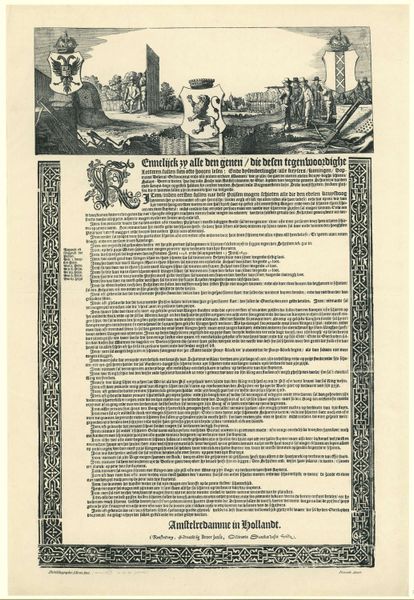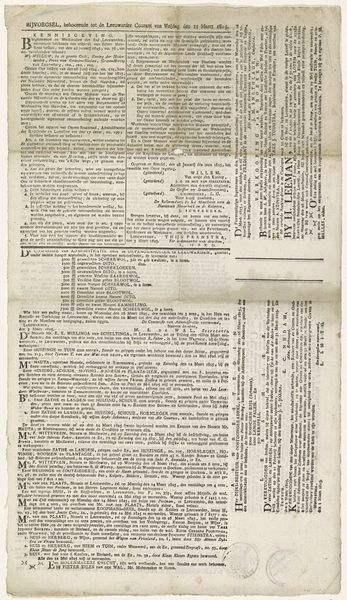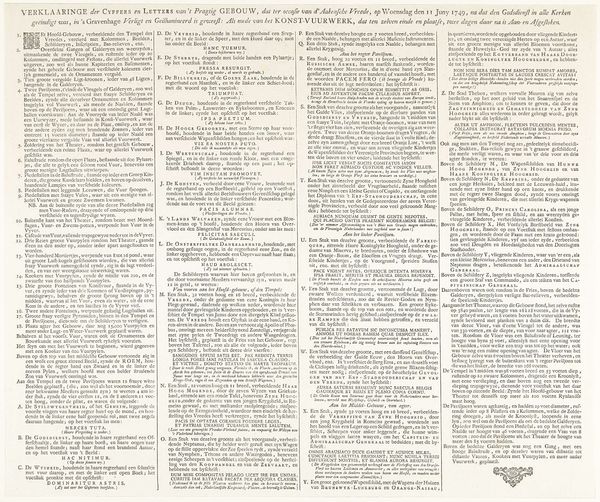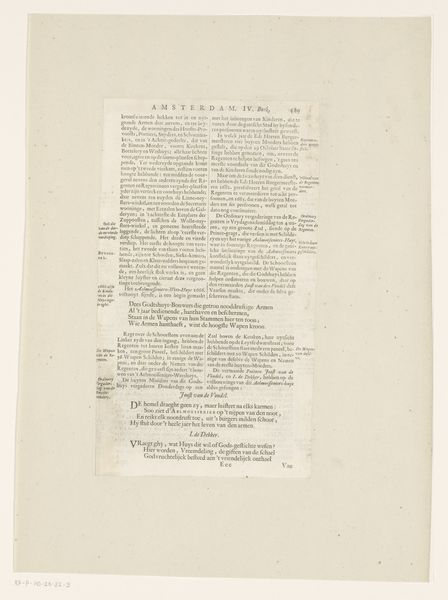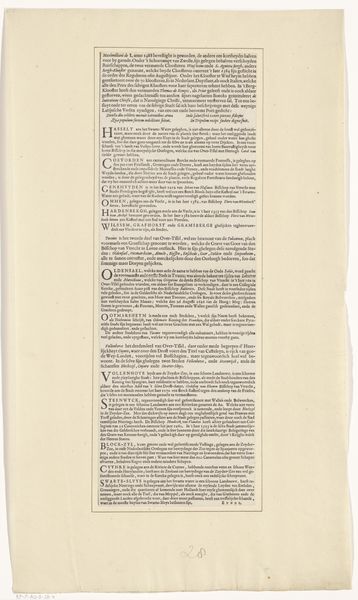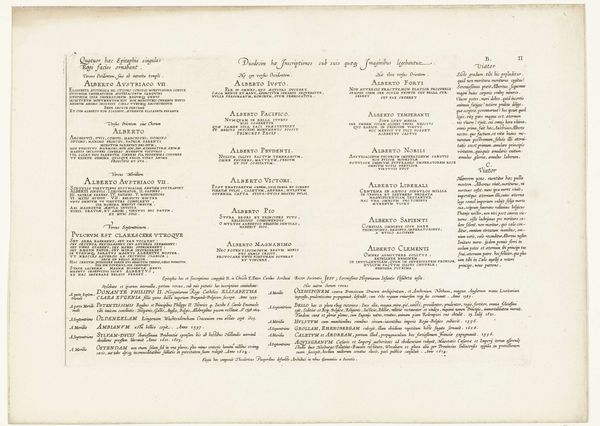
print, textile, paper
#
dutch-golden-age
# print
#
textile
#
paper
#
history-painting
Dimensions: height 275 mm, width 283 mm
Copyright: Rijks Museum: Open Domain
This is a printed text from 1673 by Jan Claesz ten Hoorn, describing a Roman Catholic procession in Utrecht. The printed words are formed through the impressing of ink onto paper. The result is a precise reproduction of the original text through printing technology. The appearance of the print is influenced by the properties of the paper, ink, and the printing press. It showcases the technology that allowed the quick dissemination of information, and mass communication during the 17th century. The making process involved careful typesetting, inking, and pressing, reflecting a skilled tradition of craftsmanship and fine arts. This print is tied to broader social issues of labor, politics, and consumption. The printing of this text meant that information could be disseminated far more widely and quickly than via word of mouth or handwriting. The relationship between the artwork and modes of production like capitalism lies in its ability to document the work involved in the production process. By focusing on materials, making, and context, we understand the artwork's full meaning, challenging distinctions between fine art and craft.
Comments
No comments
Be the first to comment and join the conversation on the ultimate creative platform.
